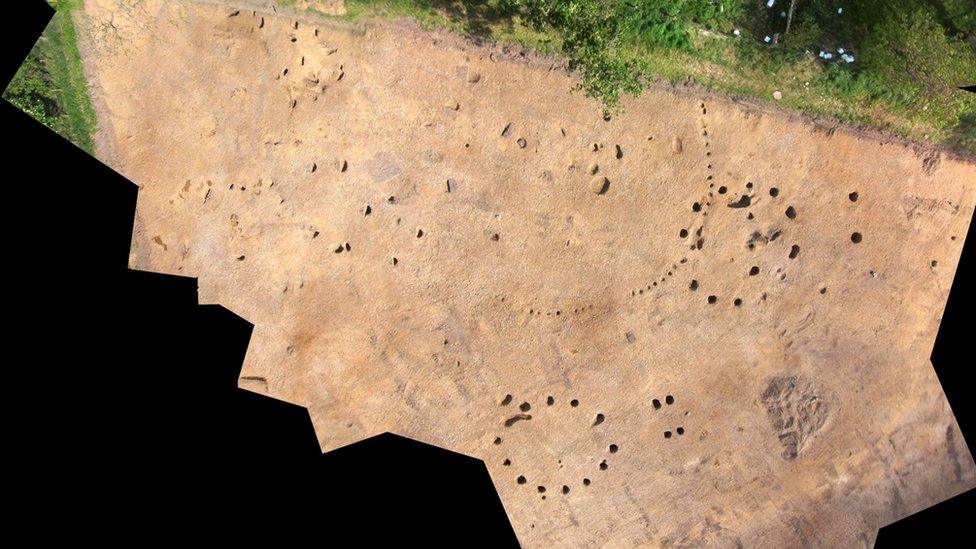Burrough Hill archaeologists find Iron Age chariot remains
- Published
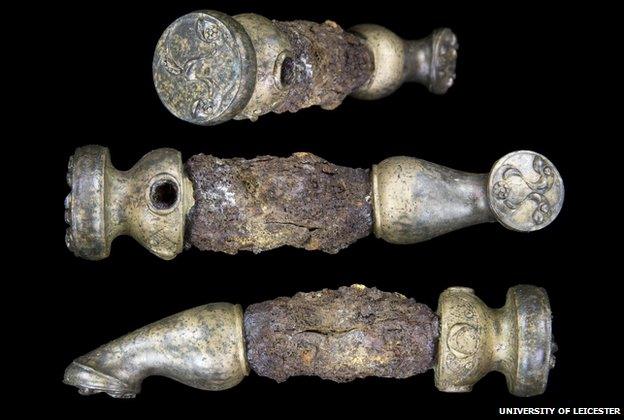
The bronze remains of the 2,200 year old chariot were found at Burrough Hill, an Iron Age fort near Melton Mowbray
Remains of an "extremely rare" Iron Age chariot have been uncovered during an excavation in Leicestershire.
The University of Leicester discovered the bronze fittings from a 2nd or 3rd Century BC chariot at the Iron Age fort Burrough Hill.
Experts believe the chariot was either dismantled, or never built, and buried in a box and burnt as part of a ritual.
It is thought the chariot would have belonged to a high-status individual such as a noble or warrior.
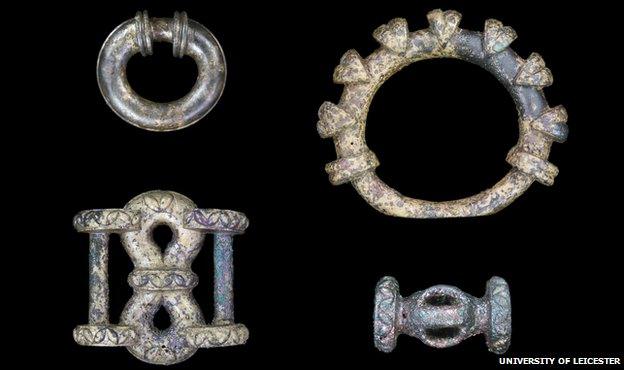
The parts of the chariot are highly decorative with Celtic-style designs
The discovery was made by student Nora Battermann during a five-year project by the university's school of archaeology. The parts were found in a deep pit near the remains of a house within the hill-fort near Melton Mowbray.
Dr Jeremy Taylor, from the university, said: "I've been digging for the best part of 30 years and never found anything like it. It's a once-in-a-career discovery.
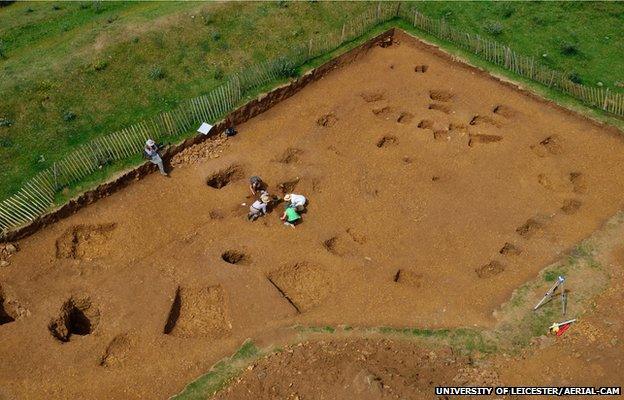
The University of Leicester has been excavating at Burrough Hill since 2010
"To find a chariot is rare - in east Yorkshire there was a practice of chariot burial but outside that area it is extremely rare to find one."
Experts believe the fittings, which are highly decorative, were put in a box and then placed on a layer of cereal chaff and burnt as part of a religious ritual.
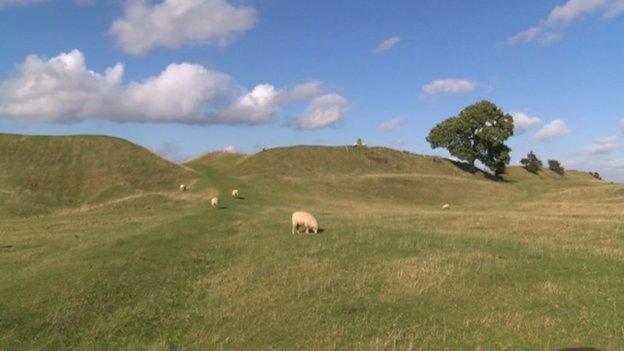
The large earth works of an Iron Age hill-fort are still visible at Burrough Hill in Leicestershire
The parts, which were also found with tools thought to be equine related, have been cleaned up and will go on display at Melton's Carnegie Museum.

The Iron Age
The European Iron Age starts in about 800 BC and runs until the Roman conquest, which was the year AD43 in Britain
The people of the period were farmers, growing wheat, barley and beans along with animals such as cattle, sheep and pigs
Most people lived on farms or small villages but others stayed in larger settlements such as hill-forts
Skilled craftsmen used advanced techniques to make highly decorated metal objects like the chariot at Burrough Hill
- Published15 July 2012
